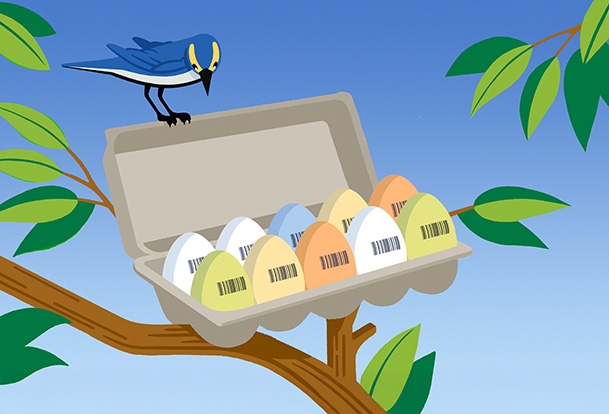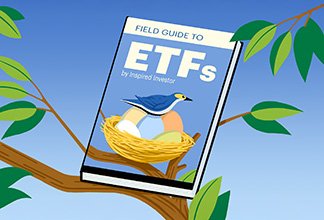How to Buy and Sell ETFs
Published on February 24, 2020
minute read
Share:
Buying and selling ETFs is similar to trading stocks. You'll want to look at things like volume, liquidity and the bid/ask spread, all of which you can find in a Detailed Quote. An ETF Screener can help you find ETFs that might be right for you, or you can search for a specific ETF name or symbol if you already know it.
Let's look more closely at some common trading concepts and how they apply to ETFs.
Trading
Volume
ETFs have daily trading volumes, just like stocks do. Volume represents the number of units of that ETF that trade on any given day, which is influenced by the activity of investors — again like a stock. However, with ETFs, daily volume is often mistakenly used as a gauge for liquidity. Read on to find out why.
Liquidity
One of the most misunderstood aspects of ETFs is liquidity. Unlike with stocks, low trading volume with ETFs doesn't equate to low liquidity. An ETF's liquidity is determined by the liquidity of its underlying securities. If an ETF invests in securities that have limited supply or are difficult to trade, this may impact the market makers' ability to create or redeem units of the ETF, which in turn may affect a portfolio's liquidity.
Bid-ask spreads
An ETF's bid and ask prices will generally closely align with the value of the underlying securities held by the ETF. However, bid-ask spreads — the difference between the bid and ask prices — can be affected by:
1. Spreads on the underlying securities
Since an ETF is essentially a basket of securities, the spread on the ETF will reflect the spread on the underlying securities. If the underlying securities themselves are very liquid, the ETF should also be very liquid, and therefore have a small spread. An example of this could be large-cap U.S. stocks, which generally have high trading volumes and very narrow spreads. Asset classes that are not as liquid will have wider spreads.
2. Cost of assembling and trading
The cost of assembling and trading the securities that make up an ETF may impact the spread. For instance, if an ETF invests in foreign securities, there would be additional costs to convert Canadian dollars to the underlying currencies. An ETF that buys European dividend stocks first needs to buy pounds sterling, euros, Swiss francs and so on. Another example would be any regulatory costs and taxes.
3. Trading volumes
When an investor is making a very large purchase of an ETF, for more than the amount of inventory the market maker has for sale, the market maker may need to create more ETF units by buying substantial amounts of the underlying securities. This may involve having to pay higher asking prices to fill the orders — often referred to as "market impact costs."
4. Market risks
Bid-ask spreads can also widen during times of heightened market risk or increased market volatility. If market makers are required to take extra steps to facilitate their trades during periods of volatility, spreads of the underlying securities may be wider, which will mean wider spreads on the ETF.
For example, trading risk can arise during times when foreign markets are closed and Canadian markets are open since market makers wouldn't be able to buy more U.S. stocks if they needed to create more ETF units, nor would they be able to monitor the underlying prices of those securities directly.
Order Types
Order types for ETFs are in line with those for stocks. Find out more in "How to Buy and Sell a Stock" video.
Here's a cheat sheet of common order types.
|
PRO |
CON |
|
|
Market order |
Order is usually filled quickly. |
No control over the price at which the order is filled. |
|
Limit order |
Control over the price at which the order is filled. |
Chance the order will not be filled. |
|
Stop or stop-limit orders |
Helps curb losses or protect gains. |
Stop orders: When triggered, no control over price at which the order is filled. Stop-limit orders: Better control over price when triggered, but not guaranteed in fast-moving markets. |
Practice Trading ETFs
An RBC Direct Investing Practice Account is a zero-risk way to try out buying and selling ETFs and other types of investments. Find out more in Explore RBC Direct Investing With a Practice Account.
Remember, there are risks and benefits associated with any investment. It's a good idea to weigh both the risks and benefits when determining if any type of investment is right for you.
RBC Direct Investing Inc. and Royal Bank of Canada are separate corporate entities which are affiliated. RBC Direct Investing Inc. is a wholly owned subsidiary of Royal Bank of Canada and is a Member of the Investment Industry Regulatory Organization of Canada and the Canadian Investor Protection Fund. Royal Bank of Canada and certain of its issuers are related to RBC Direct Investing Inc. RBC Direct Investing Inc. does not provide investment advice or recommendations regarding the purchase or sale of any securities. Investors are responsible for their own investment decisions. RBC Direct Investing is a business name used by RBC Direct Investing Inc. ® / ™ Trademark(s) of Royal Bank of Canada. RBC and Royal Bank are registered trademarks of Royal Bank of Canada. Used under licence.
© Royal Bank of Canada 2023.
There may be commissions, trailing commissions, investment fund management fees and expenses associated with investment fund and exchange-traded fund (ETF) investments. On or after June 1, 2022, any trailing commissions paid to RBC Direct Investing Inc. will be rebated to clients pursuant to applicable regulatory exemptions. Before investing, please review the applicable fees, expenses and charges relating to the fund as disclosed in the prospectus, fund facts or ETF facts for the fund. Mutual funds are not guaranteed, their values change frequently and past performance may not be repeated. For money market funds there can be no assurances that the fund will be able to maintain its net asset value per security at a constant amount or that the full amount of your investment in the fund will be returned to you.
Any information, opinions or views provided in this document, including hyperlinks to the RBC Direct Investing Inc. website or the websites of its affiliates or third parties, are for your general information only, and are not intended to provide legal, investment, financial, accounting, tax or other professional advice. While information presented is believed to be factual and current, its accuracy is not guaranteed and it should not be regarded as a complete analysis of the subjects discussed. All expressions of opinion reflect the judgment of the author(s) as of the date of publication and are subject to change. No endorsement of any third parties or their advice, opinions, information, products or services is expressly given or implied by RBC Direct Investing Inc. or its affiliates. You should consult with your advisor before taking any action based upon the information contained in this document.
Furthermore, the products, services and securities referred to in this publication are only available in Canada and other jurisdictions where they may be legally offered for sale. If you are not currently a resident of Canada, you should not access the information available on the RBC Direct Investing Inc. website.
Inspired Investor brings you personal stories, timely information and expert insights to empower your investment decisions. Visit About Us to find out more.










